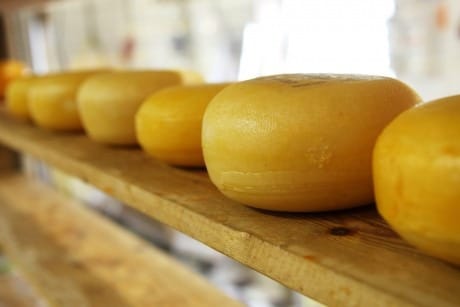Cheese coating is a technique used when making the product that plays a very important role in cheese packaging and in its final appearance. At Concentrol, based on our experience in the design and production of chemical solutions for the food industry, we have promoted the VIPLAST coating range, which adapts to any application system and any nature of the coating with the highest guarantees of food safety.
Also, note that the VIPLAST range includes plastic coatings and edible coatings based on food additive formulations as food contact coatings according to EU Regulation No. 10/2011 (plastic and fatty acid based coatings) and edible coatings based on food additive formulations such as gums or cellulose.
The application of VIPLAST range of coatings provides an adequate conditioning of cheese, contributing to an improvement of appearance of each item during its maturation, storage and sale.
Being a superficial treatment, it brings the advantages of an external protective cover, without penetrating inside the cheese. This characteristic guarantees that neither the taste nor the organoleptic properties of the cheese are altered. Following we outline the main advantages and features of Concentrol's VIPLAST range:
- Protection of the skin from microbial defects caused by molds and yeasts.
- Protection against skin damage during aging (surface cracking) and transport.
- Reduction of excessive cheese weight loss (dehydration) without influencing the aging process, decreasing the shrinkage and improving the yield of coated cheese versus that obtained with untreated cheese.
- Desired flavour, texture, consistency and appearance of cheese during its aging.
- Standardization of cheese quality.
Production process
In the cheese making process there are different times when the coating can be applied. In some cases it is applied before and during the aging stage, at which time the coating will perform the function of regulating moisture loss during the cheese curing process and protection against the unwanted growth of microorganisms, especially molds and yeasts. When applied after aging, VIPLAST protects the piece against microorganisms (molds and yeasts) and other contaminants. It also offers protection against material damage produced during transport and distribution and affords a specific final appearance, for example of a certain colour.
Plastic coatings and natural coatings
The cheese industry can find different types of coating within the VIPLAST range that adapt to their needs according to the characteristics of the product. We distinguish the type of coating according to whether it is a plastic coating or a natural one.
Plastic coatings provide a film, coloured on demand, on the surface of the cheese. The main features are that VIPLAST plastic coatings are totally non-toxic, besides that they do not penetrate into the product and regulate the aging process without influencing the odour or taste of the treated item. In addition, it offers three different types of finish: glossy, satin and matte and some characteristics can be adjusted, for example in wedge cutting, drying speed and moisture resistance (vacuum packaging). Regarding natural coatings, they are formulated with food additives that meet the requirements to be suitable for food contact according to EU Regulation No. 1333/2008 and subsequent modifications. Natural coatings have a greater breathability than plastic ones and provide a more traditional and natural look.



